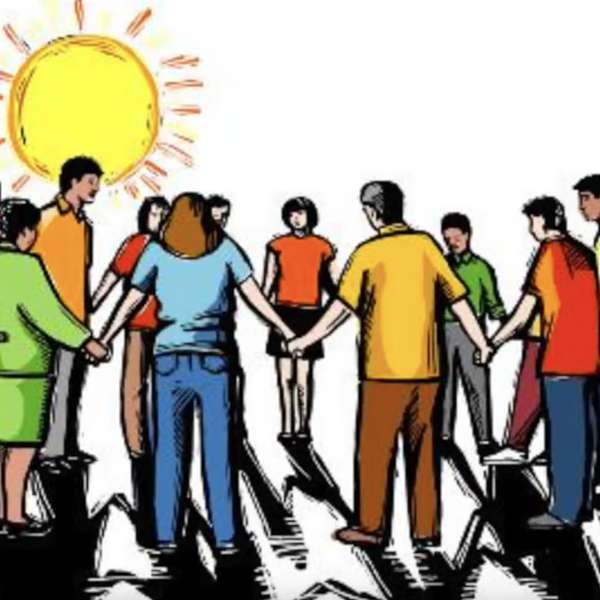
Prepare With ICEBUDDY
Learn how the ICEBUDDY System technology is the game changer for the global need to be prepared at all times given the increasing number of man-made and natural disasters. ICEBUDDY SYSTEMS LLC is a healthcare company focusing on medical, business and personal technology products.
Prepare With ICEBUDDY
A Congregational Strategy
Emergency Preparedness Strategies for faith leaders to implement with their congregations.
#icebuddy
#wesavelives
#madeinamerica
#kosherapproved
#halalapproved
#coldonthego
Welcome back
Speaker 2:This week's session for faith leaders is on discovering your congregational strategy. Let me begin by thanking you for sharing what was learned by completing last week's CALL TO ACTION. It is exciting to have so many faith leaders globally participating in this Disaster Preparedness series.
:For those of you joining us for the first time last week, we discussed the importance of the faith community's collective memory. Before there was the written word, or even before there was oral communication or language people communicated their collective memory using art, music and sound. Some of you realized to get the full story of your congregation's collective memory, you needed to understand the role art, music, and sounds played in their culture. For example, drawings, vocal sounds, drums, horns, and conch shells have been used globally by numerous cultures to communicate, warning and instructions when danger is coming. All of these mediums are available to communicate information for our survival. Therefore, never rely on one form of communication when developing a congregational emergency preparedness strategy. The reason this series is so important for you, the faith leader is because no one else is talking about this. And as several of you said who were with us last week that you never thought about what you would do should there be a disaster when your congregation of 20 or 20,000 as the case may be, are with you in your sanctuary and then they have to shelter there. Many of you have not made preparation and we want to make sure that you are prepared. So today let's focus on discovering your congregational strategy. Yes, you must DISCOVER what strategy should be used, NOT IMPOSE what you want it to be. I know some of you are cringing right now you're thinking, wait a minute, I'm the leader. It's my responsibility to implement what I feel is best for my flock. Many times leaders labor under the false perception that everyone in their congregation believes what they believe. It is important to remember that while many you lead may share some of your ideals and religious precepts, they are still individuals who have their own thoughts and priorities. To discover the optimum emergency preparedness strategy, you must engage in a dialogue with your congregation that reveals their thinking and their needs in reference to disasters. In our last show, I said that One strategy DOES NOT FIT ALL. Let me give you an example of what I mean. For this example, we're going to discuss developing a strategy for a congregation located in the United States. In this country, Oil, Gas, and Electricity are our major modes of energy. We have our own ideas of how important these resources are and we usually take access to them for granted. We don't think about how losing access would impact our sense of stability and lead us into panicking.
Speaker 2:I want you to think of just one of these resources for the purpose of this discussion. How would you rate your level of panic if you lost electricity due to a disaster? How much panic would you experience if you were without electricity for say 24 hours? Okay. Now what about one week? What about one month and what if it's off for one year? What did you learn about yourself? Each of your congregation members would rate their level of panic differently based on a variety of factors. If you think everyone would or should be able to keep it together and not need to panic during the first 24 hours, you are sorely mistaken. Did you consider the impact of losing electricity even for 24 hours on your members who have medications requiring refrigeration or those on oxygen and CPAP machines? Or what about the ones living on the 23rd floor of a high rise apartment building? If you didn't, you are likely to develop a strategy that does not take the needs of your congregants into consideration.
:Begin the process of engaging your members to ascertain their needs should disaster strike. You will uncover during these discussions resources that your congregation has at their disposal. Remember, we all have gifts and talents, not only designed for our survival, but that we can use to help our fellow man. Do you know each member's gifts and talents? Have you ever asked them? Inclusion and respect for the contributions and insight of all, including children and elders is paramount. Each person has valuable contributions to make and the more involved everyone is in the planning process, the more invested they become in its successful implementation. This week's CALL TO ACTION is to engage your faith community in discussions that will reveal what disaster situations worry them most, and will make them panic. Also, while having these conversations document each person's gifts and talents. You may discover a treasure trove of resources you had no idea were available. So GO and LEARN THINGS!!! Until next time, Keep Cool and Carry On.